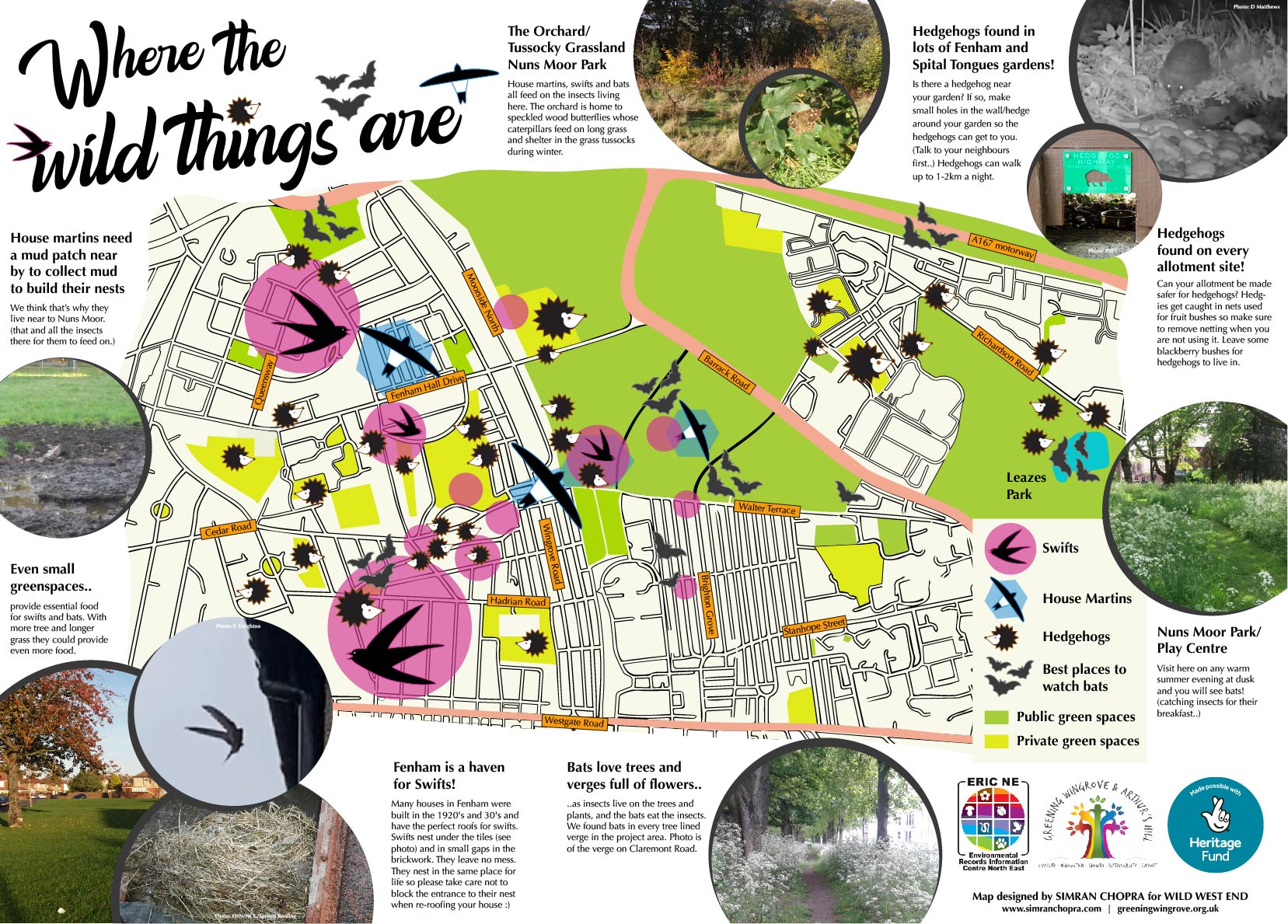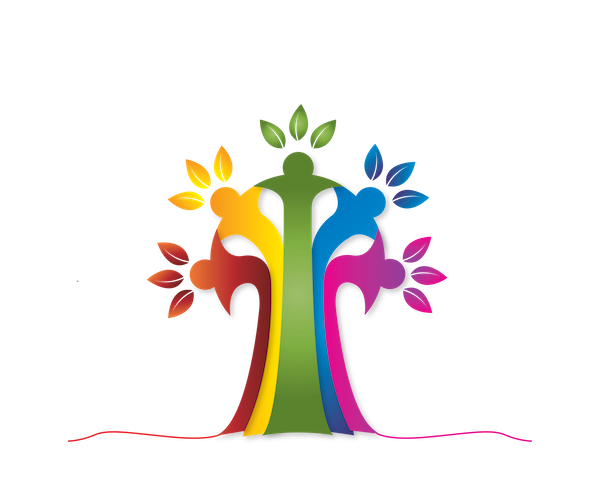Wild West End

We are really pleased to share with you the results of the Wild West End Project! See our beautiful map! For more illustrated maps and detailed GIS maps see the seperate Bat, Swift/Housemartin and Hedgehog web pages.
For the last 2.5 years residents, community groups, schools and businesses have told us when and where they have seen hedgehogs, bats, swifts and house martins across the Wingrove and Arthurs Hill wards.
Volunteers also searched for wildlife; doing swift and house martin surveys, going out at dusk with bat detectors to look for bats and using hedgehog tunnels to look for hedgehogs.
What have we found?
Fenham is a haven for swifts as swifts prefer to live under the tiles of houses built in the 1920’s and 30’s. There are also swifts in Arthurs Hill as they like Victorian roofs too.
Hedgehogs are found in parks, allotments and gardens mainly in Fenham and Spital Tongues. See the web page on hedgehogs for where we didn’t find them.
Pipistrelle bats were found in many places across the Wingrove and Arthurs Hill wards, but we found them most often in the places that have trees, long grass and other plants. The bats were flying around catching and eating the insects that live on the plants. See the map on pages 2 and 3 for the best places to see them. We didn’t manage to find the buildings where the bats roost (sleep and hibernate in the winter) but we know there must be roof spaces that are ideal for them to sleep in or we wouldn’t have any bats!
There are two colonies of house martins in Fenham. See the webpage on Housemartins.
WWE was a 2.5 year project funded by the National Lottery Heritage Fund to see whether we have hedgehogs, swifts, house martins and bats living in Wingrove and Arthur’s Hill. All of these creatures are classified as ‘at risk’ as the numbers of them are declining in Britain. We wanted to understand where they nest, where they eat and where they sleep in the winter (hedgehogs and bats) so that together we can make the West End a better place for them.
Although the main part of the project has now come to an end, Wild West End volunteers are still advocating for and observing west end wildlife. And the project officer can still be contacted on wildwestend@greeningwingrove.org.uk
Follow us on facebook https://www.facebook.com/Wild-West-End-Newcastle-471335296963629/?modal=admin_todo_tour
Ruth Hayward, Wild West End Project Officer, Nov 2021

